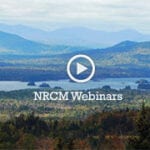As a follow-up to last month’s article about the flying squirrel at Duck Pond Wildlife Care Center, I wanted to share some information I found from my online research. January’s column included a general overview from articles written by Carleen Cote several years ago, but I was curious about their habitat, diet, family structure, etc.
One source stated the only flying squirrel found in North America was the northern, but several other sites confirmed what Don has recently learned: there are two species of flying squirrels in Maine. Warming climate and habitat loss have caused the smaller, more aggressive southern flying squirrel to expand its territory (recent Canadian studies indicate there are already hybrids from crossbreeding).

Photo by Jeff Herbster
Both species are light brown in color, with grayish or white bellies; the northern is larger by a couple of inches, reaching a length of 10-15 inches. Flying squirrels are entirely nocturnal, with oversized eyes that are adapted for low-light conditions. Their diet is varied and includes tree sap, nuts, fruit, seeds, fungi, lichen, insects, carrion, bird eggs and yes, even baby birds. Rotting wood is a great spot for favorite foods, and although they’re awkward on their feet, they will scavenge on the forest floor. While flying squirrels are known to store food for winter, they’re not as active in caching, compared to chipmunks and other squirrels.
Flying squirrels generally nest in tree cavities but will also build nests underground and leaf nests called dreys. Except when raising their young, flyers frequently shift from nest to nest and often huddle together in colonies during winter months to maintain body temperature. They don’t hibernate, but limit activity during cold periods to reserve body fat. Breeding is between March and May with the male (“buck”) pursuing multiple females (“does”). Gestation is five to six weeks, and the female is the sole parent on duty after delivering one to six pups. Their eyes open at one month, and youngsters can leave the nest at six weeks of age. They’re weaned after two months and “flying” at three, but may live with mom for another four to eight weeks before moving out. In warmer climates, the southern flyer can have two litters a year.
“Flyers” don’t actually fly, but glide with large flaps of skin called patagia, that stretch between all four legs and act as a parachute when the squirrels launch, allowing them to soar up to 300 feet horizontally. They maneuver easily in the air and can make 90-degree turns around obstacles. The flat tail serves as a rudder, and just before landing, its upward movement decreases its speed, with the legs absorbing the shock. They’re also expert climbers.
Flying squirrels are reasonably common and are not listed as threatened in Maine. Other than predation by owls, hawks, bobcats, lynx, weasels, fox, or coyotes, the biggest threat to flyers is probably habitat loss. Because they are nocturnal and tree nesters, they may be especially susceptible to climate change here, as they will experience highest temperatures during their daily resting phase.
Sadly, the flying squirrel at Duck Pond did not survive. Don was preparing to move him to a larger enclosure in the basement so he could get more exercise, but in relocating the cage discovered that he had died, probably from internal injuries. Don did wonder, however, if the squirrel died of loneliness, as flyers tend to overwinter in groups of 75-80 individuals.
Although admissions slow down during the winter months, Don will get calls from folks worried about young animals now on their own. Many are learning how to manage without parental care, but others may be orphaned or injured, struggling to survive. Don continues to take them in but does transfer rescues to other rehabbers who continue to provide assistance to help keep critter care at Duck Pond manageable. Please check the following websites to see if there is a rehabber near you: www.mainevetmed.org/wildlife-rehabilitation or www.maine.gov/ifw/fish-wildlife/wildlife/living-with-wildlife/orphaned-injured-wildlife/index.html. Donald Cote operates Duck Pond Wildlife Care Center on Rte. 3 in Vassalboro. It is a nonprofit, State-permitted rehab facility supported by his own resources and outside donations. Mailing address: 1787 North Belfast Avenue, Vassalboro ME 04989 Phone: (207) 445-4326. Please note that the prior wildlifecarecenter email address is not being monitored at this time.
—by Jayne Winters, Natural Resources Council of Maine member from South China, Maine
Critter Chatter also appears monthly in the Town Line newspaper.









Leave a Reply